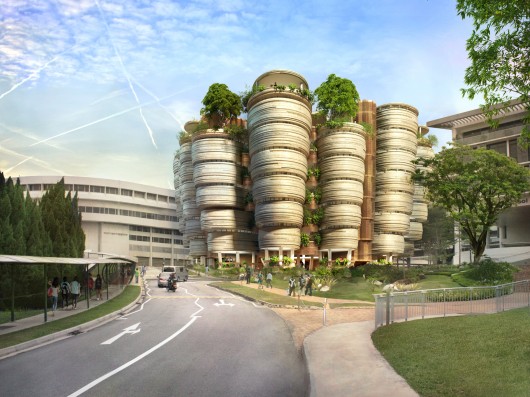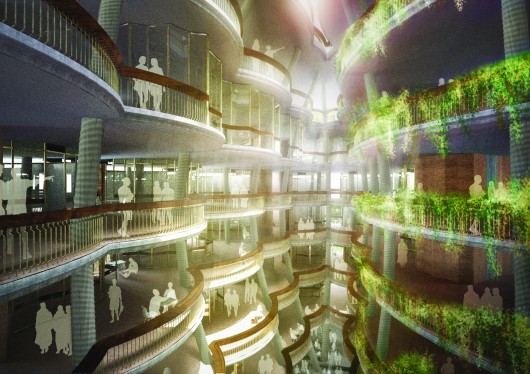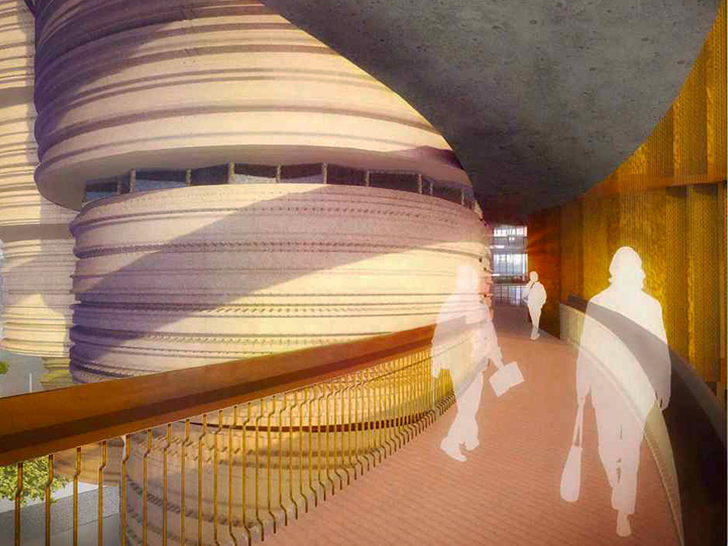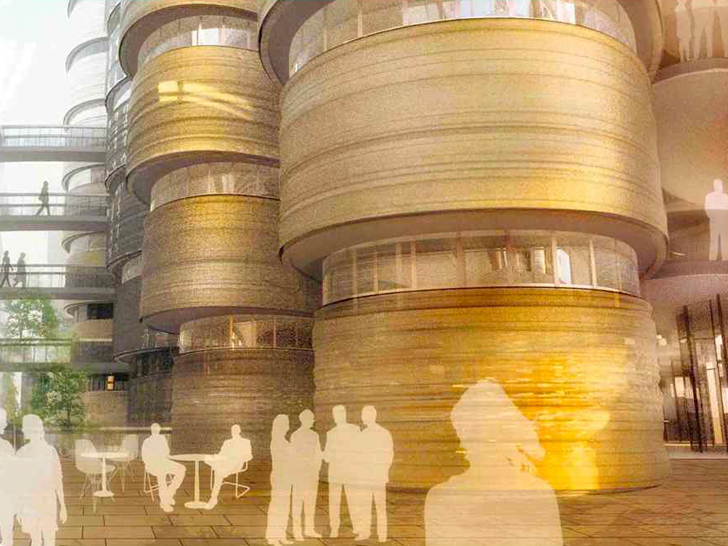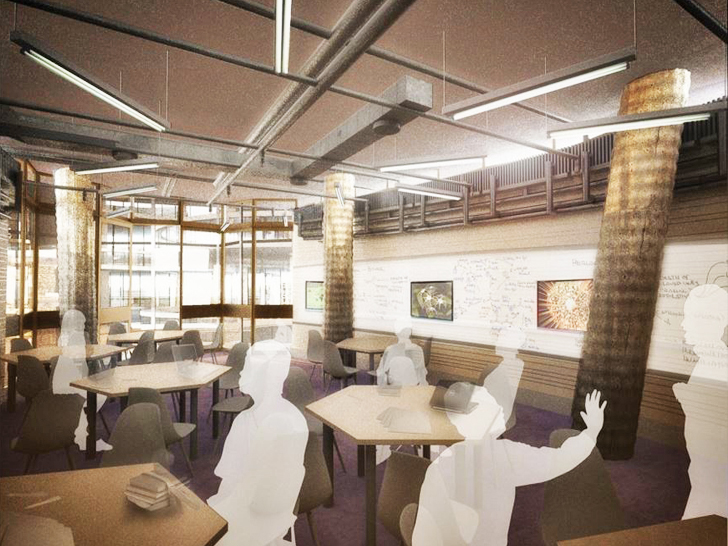In a competition to design a "Learning Hub" for students at Nanyang University in Singapore, London-based firm Heatherwick Studio has won with a rounded, hive-like design. The £360 million project has won the BCA Green Mark Platinum Award for Sustainability from the government of Singapore.
The architects said that the design is meant to transcend the original purpose of a university building, redefining the spaces where students collaborate.
Rather than a building principally meant to house educational texts, they sought to design an appealing place for students to work and socialize, given the fact that the Internet makes it possible for educational information to be accessed outside of university buildings.
Fifty-six rooms will be condensed into a space with no conventional corridors, and will center around an area that can be entered from 360 degrees, Arch Daily reports. This central space will link all of the structure's separate towers, which contain classrooms stacked upon one another. Selected floors will also feature gardens.
"Another inspiration for the hub was a wish to break down the traditional, square, forward-facing classrooms with a clear front and hierarchy, and move to a cornerless space, where teachers and students mix on a more equal basis," Heatherwick Studio said in a statement.
"In this model, students work together around shared tables, with teacher as facilitator and partner in the voyage of learning, rather than ‘master’ executing a top-down model of pedagogy."
Heatherwick will work with local architects CPG Consultants to fully realize the Learning Hub. All renderings courtesy of Heatherwick Studio.
Related Stories
| Oct 5, 2011
GREENBUILD 2011: Brick offers growing options for sustainable building design
Brick exteriors, interiors and landscaping options can increase sustainability that also helps earn LEED certification.
| Oct 5, 2011
GREENBUILD 2011: Roof hatch designed for energy efficiency
The cover features a specially designed EPDM finger-type gasket that ensures a positive seal with the curb to reduce air permeability and ensure energy performance.
| Oct 4, 2011
GREENBUILD 2011
Click here for the latest news and products from Greenbuild 2011, Oct. 4-7, in Toronto.
| Oct 4, 2011
GREENBUILD 2011: Methods, impacts, and opportunities in the concrete building life cycle
Researchers at the Massachusetts Institute of Technology’s (MIT) Concrete Sustainability Hub conducted a life-cycle assessment (LCA) study to evaluate and improve the environmental impact and study how the “dual use” aspect of concrete.
| Oct 4, 2011
GREENBUILD 2011: Johnsonite features sustainable products
Products include rubber flooring tiles, treads, wall bases, and more.
| Oct 4, 2011
GREENBUILD 2011: Nearly seamless highly insulated glass curtain-wall system introduced
Low insulation value reflects value of entire curtain-wall system.
| Oct 4, 2011
GREENBUILD 2011: Ready-to-use wood primer unveiled
Maintains strong UV protection, clarity even with application of lighter, natural wood tones.
| Oct 4, 2011
GREENBUILD 2011: Two new recycled glass products announced
The two collections offer both larger and smaller particulates.
| Oct 4, 2011
GREENBUILD 2011: Mythic Paint launches two new paint products
A high performance paint, and a combination paint and primer now available.



